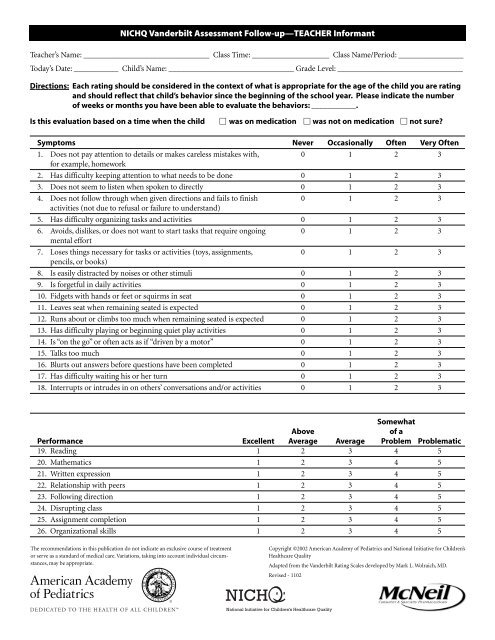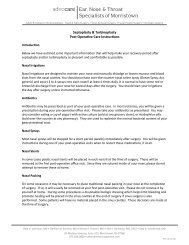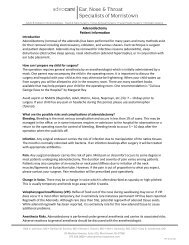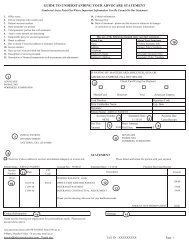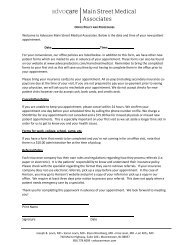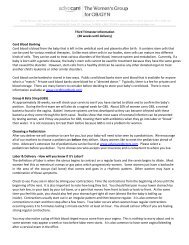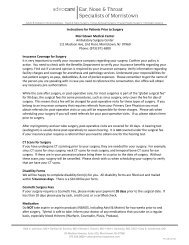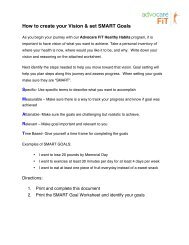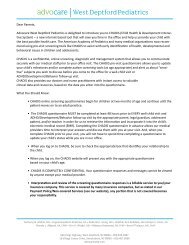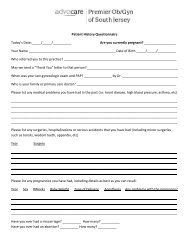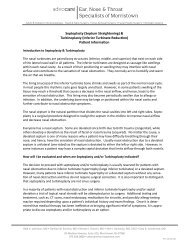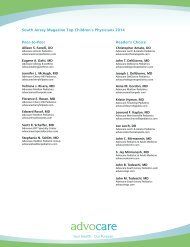NICHQ Vanderbilt Assessment Follow-upâTEACHER Informant
NICHQ Vanderbilt Assessment Follow-upâTEACHER Informant
NICHQ Vanderbilt Assessment Follow-upâTEACHER Informant
- No tags were found...
You also want an ePaper? Increase the reach of your titles
YUMPU automatically turns print PDFs into web optimized ePapers that Google loves.
<strong>NICHQ</strong> <strong>Vanderbilt</strong> <strong>Assessment</strong> <strong>Follow</strong>-up—TEACHER <strong>Informant</strong>Teacher’s Name: _______________________________ Class Time: ___________________ Class Name/Period: ________________Today’s Date: ___________ Child’s Name: _______________________________ Grade Level: _______________________________Directions: Each rating should be considered in the context of what is appropriate for the age of the child you are ratingand should reflect that child’s behavior since the beginning of the school year. Please indicate the numberof weeks or months you have been able to evaluate the behaviors: ___________.Is this evaluation based on a time when the child was on medication was not on medication not sure?Symptoms Never Occasionally Often Very Often1. Does not pay attention to details or makes careless mistakes with, 0 1 2 3for example, homework2. Has difficulty keeping attention to what needs to be done 0 1 2 33. Does not seem to listen when spoken to directly 0 1 2 34. Does not follow through when given directions and fails to finish 0 1 2 3activities (not due to refusal or failure to understand)5. Has difficulty organizing tasks and activities 0 1 2 36. Avoids, dislikes, or does not want to start tasks that require ongoing 0 1 2 3mental effort7. Loses things necessary for tasks or activities (toys, assignments, 0 1 2 3pencils, or books)8. Is easily distracted by noises or other stimuli 0 1 2 39. Is forgetful in daily activities 0 1 2 310. Fidgets with hands or feet or squirms in seat 0 1 2 311. Leaves seat when remaining seated is expected 0 1 2 312. Runs about or climbs too much when remaining seated is expected 0 1 2 313. Has difficulty playing or beginning quiet play activities 0 1 2 314. Is “on the go” or often acts as if “driven by a motor” 0 1 2 315. Talks too much 0 1 2 316. Blurts out answers before questions have been completed 0 1 2 317. Has difficulty waiting his or her turn 0 1 2 318. Interrupts or intrudes in on others’ conversations and/or activities 0 1 2 3SomewhatAboveof aPerformance Excellent Average Average Problem Problematic19. Reading 1 2 3 4 520. Mathematics 1 2 3 4 521. Written expression 1 2 3 4 522. Relationship with peers 1 2 3 4 523. <strong>Follow</strong>ing direction 1 2 3 4 524. Disrupting class 1 2 3 4 525. Assignment completion 1 2 3 4 526. Organizational skills 1 2 3 4 5The recommendations in this publication do not indicate an exclusive course of treatmentor serve as a standard of medical care. Variations, taking into account individual circumstances,may be appropriate.Copyright ©2002 American Academy of Pediatrics and National Initiative for Children’sHealthcare QualityAdapted from the <strong>Vanderbilt</strong> Rating Scales developed by Mark L. Wolraich, MD.Revised - 1102
<strong>NICHQ</strong> <strong>Vanderbilt</strong> <strong>Assessment</strong> <strong>Follow</strong>-up—TEACHER <strong>Informant</strong>Teacher’s Name: _______________________________ Class Time: ___________________ Class Name/Period: ________________Today’s Date: ___________ Child’s Name: _______________________________ Grade Level: _______________________________Side Effects: Has your child experienced any of the following sideAre these side effects currently a problem?effects or problems in the past week? None Mild Moderate SevereHeadacheStomachacheChange of appetite—explain belowTrouble sleepingIrritability in the late morning, late afternoon, or evening—explain belowSocially withdrawn—decreased interaction with othersExtreme sadness or unusual cryingDull, tired, listless behaviorTremors/feeling shakyRepetitive movements, tics, jerking,twitching,eye blinking—explain belowPicking at skin or fingers, nail biting, lip or cheek chewing—explain belowSees or hears things that aren’t thereExplain/Comments:For Office Use OnlyTotal Symptom Score for questions 1–18: ____________________________________Average Performance Score: ______________________________________________Please return this form to:__________________________________________________________________________________Mailing address: __________________________________________________________________________________________________________________________________________________________________________________________________Fax number:______________________________________________________________________________________________Adapted from the Pittsburgh side effects scale, developed by William E. Pelham, Jr, PhD.


